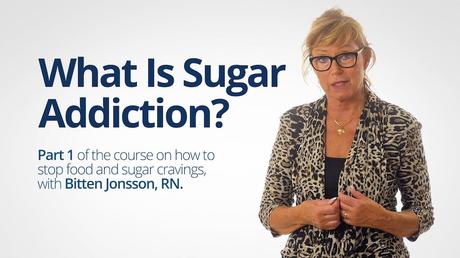Are you unable to stop eating foods that you know contribute to your struggles with your weight or health? Do you find yourself craving or obsessing over certain foods?
If you start eating a favorite food, do you find it hard to stop?
If you answer yes to these questions, or to more behaviors described below, you may have a food addiction.
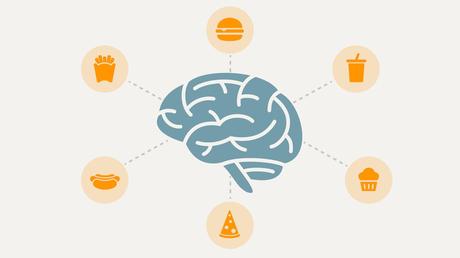
Food addiction is different from simply overeating (routinely eating too much). It is also different from emotional eating (eating to numb uncomfortable emotions).
Food addiction is a form of neurochemical dependency on certain foods. It is similar to a drug or gambling addiction. The food addict's brain circuitry compels them to eat uncontrollably when the trigger food is re-introduced, regardless of how they feel emotionally, their mental state, or their hunger.
Food addiction has been controversial for many years. Some researchers have questioned whether it really exists. How can food be addictive if we need it for our survival?
Those who discount the reality of food addiction instead sometimes blame the compulsion to overeat certain foods on the individual's lack of willpower, moral failings, or poor behavioral choices.
Fortunately, in recent years mounting research evidence is showing that - just like alcohol, tobacco, cocaine, or other addictive substances - certain foods light up the brain's ancient neurochemical reward pathways in susceptible people and can create a chemical dependency. This causes an addictive brain response that is beyond the control of individual willpower or vows of moderation.
The increased research and understanding around the existence of true food addictions are leading to better diagnosis, treatment, and support for those with food addictions. But more awareness is still needed.
I am a specialist in addiction medicine who, for more than 30 years, has treated patients with all kinds of addictions: to alcohol, to recreational and prescription drugs, to behavioral stimulants such as gambling, sex, porn, and video gaming - and yes, to food.
In fact, I myself am a food addict who has lost more than 100 pounds and kept it off by recognizing my addiction and then avoiding my trigger foods (primarily sugar, flour, and grains).
My book, Food Junkies: Recovery From Food Addiction, examines both the growing science around food addiction and my patients' stories. My website, Addictions Unplugged, and my Facebook page,Sugar-free for Life Support Group: I'm Sweet Enough offer further support, information, and courses for those who may have a food addiction.
In short, food addiction is real. Like a flame igniting kindling, trigger foods ignite a fiery and voracious appetite that makes us want to eat, eat, eat. But it is treatable. You can beat your food addiction, lose weight, and improve your health. Read on.
The 5 signs of addiction
How do you know if you have a food addiction?
If you are not sure, questionnaires and surveys can help you figure it out.
Foodaddicts.org has a 20-point questionnaire that asks about various behaviors and feelings of shame, guilt, and lack of control around food.
The 35 questions of the Yale Food Addiction Scale is a validated research tool used by addiction clinicians and researchers to specifically identify those who are most likely to be exhibiting markers of food addiction.
However, I have found a simple way to tell. Generally, food addiction can be identified by five key signs. These signs are the criteria of ANY addiction, whether it is food, drugs, alcohol, or behavioral.
These five signs have to do with the way addictive substances work on our brain's reward center and neurotransmitters, especially the neurotransmitter called dopamine.
1. Cravings and obsessions
- Do you crave specific foods?
- Do these foods (or food) intrude or obsessively occupy your thoughts?
- Do you neglect better foods in favor of your cravings or obsessions?
- Even when not around the food, are you obsessing about where and when you might be able to get it next?
- If you see this food, do you obsess over having it and usually give in and eat it?
Cravings and obsessions are usually a sign that the dopamine in your brain is low and your brain is seeking ways to increase it.
2. Tolerance
Tolerance is a sign that dopamine receptors in your brain have downregulated.A surge of dopamine, caused initially by the addictive substance, causes the brain to reduce its dopamine receptors in order to maintain homeostasis. This means you need more of the trigger food now to get the same effect. In addiction, this "never enough" feeling when trying to attain that initial euphoria is called "chasing the dragon."
3. Lack of control
The neurobiology of addiction, especially changes to dopamine levels and receptors, reduces the ability for voluntary self-control around trigger foods.
4. Impairment
If you are unable to stop eating certain foods despite knowing they are bad for your health, your life, or your relationships, your brain reward circuits are likely overriding your ability to control your urges.
5. Dependence
- When you try to stop, do you find it too hard and then give up?
- When you try to stop, do your cravings get worse or intolerable?
- When you stop, do you experience withdrawal, such as agitation, anxiety, insomnia, anger, or irritability? Do you feel foggy, tired, or low energy?
- Can you not imagine your life without your trigger food(s)?
- Would you do anything, even steal, to get your special food rather than stop?
Dependence on addictive foods, especially when they are all around us, can make it feel like it is impossible to avoid our trigger food and make us feel hopeless that we will ever be free of our addictive eating patterns.
Note: You don't have to have all five signs to be a food addict. Even just a few of them are enough to tell you that a certain type of food may have you caught in an addictive cycle and may be undermining your health or your ability to lose weight. If you do have all five signs then you should definitely consider yourself a food addict and treat your trigger foods as if they are as potent as an addictive drug for you.The sixth sign is denial
There is a sixth, bonus sign that you may have an addiction to specific foods. That's denying or diminishing the power that these foods are exerting in your life. In addiction medicine, we always say "addiction tells a lie."
Studies show that people with addiction often lack self-awareness or are in denial about the impact of their addiction on their life. This can reduce the chance that they seek appropriate help, prolong the addictive cycle, or increase the risk that they will relapse.
The good news is the fact that you are reading this article, and figuring out whether or not you have a food addiction, is the first step to overcoming denial. It will start you on the path to getting the effective help you need.
What is happening in the brain?

The brain chemistry that drives the addict to seek pleasure beyond the point of satiety is similar, whether the user favors Jack Daniels or Jack-in-the-Box. On a functional MRI, which can show what is happening to brain chemicals, the results are fundamentally the same whether or not the substance is cocaine, sugar, alcohol, donuts, ice cream, or heroin.
It all happens deep within our brain in a set of linked structures called the limbic system. The limbic system contains the brain's reward circuits, or reward pathway, and is involved in our behavioral and emotional responses, especially when it comes to behaviors we need for survival.
This linked set of structures, often called the ancient mammalian brain, controls and regulates our ability to feel pleasure. Feeling pleasure motivates us to learn and repeat behaviors.
Eating, and other activities that encourage our survival - such as sex, social interaction, and exercise - are all driven by the same pool of neurochemicals in our brains. Dopamine, serotonin, and endorphins travel specific neural pathways to influence our moods and give us feelings of pleasure, excitement, comfort, and joy.
- Dopamine is involved with feelings of wanting, craving, motivation, and learning. I call it the chemical of "want" and it drives us to seek out rewards.
- Serotonin is associated with happiness, comfort, and calmness. I call it the chemical of "satisfaction" that makes us feel safe and content.
- Endorphins are involved with pain relief, stress reduction, and improving a sense of well-being that can sustain us through periods of stress or pain. It numbs us and makes us feel good through the tough times.
While some drugs act on only one neurochemical (for example opiates act on endorphins) research shows that sugar, refined carbohydrates, and combinations of fat, sugar, and salt, act on and release all three chemicals. No wonder food is addictive. It covers all angles of our pleasure and comfort!
Hormonal chemicals, such as leptin and grehlin, are also involved in helping us regulate our food intake by controlling our appetite. Food addiction can override those hormones. Food addiction results when the enjoyment of food has become so euphoric and so entrenched in our brain chemistry that it dominates our natural impulse to stop when we feel full and when our appetite is satiated.
So, in short, our brains are wired to enjoy and feel pleasure from food as a primal survival mechanism. We likely enjoy foods that are high in fat and sugar - which are both high in energy - because getting enough calories and storing them as fat ensured our survival in times of famine. A brain mechanism that was very beneficial thousands of years ago is now a detriment when energy-dense, highly palatable food is all around us.
In fact, modern processed food companies knowingly exploit these brain reward pathways to engineer food - specifically ultra-processed foods high in sugar, refined carbs, fat, and salt - that we find irresistible. They make good profit from our ancestral vulnerabilities that keep us coming back for more.
And some of us are more vulnerable than others.
What distinguishes addictive behavior is the degree to which a person is compelled to eat these foods and unable to control their intake. Some people are merely tempted, giving in occasionally. Others are more at risk for a full addiction.
Addiction susceptibility and transference
Why does one person develop a food addiction that compels them to eat and eat, whereas another person can moderate their intake of the occasional treat?
Just like all addictive tendencies, research is showing that susceptibility to addictions is a complex mix of risk factors including genetics, adverse childhood experiences, exposure to stressful environments, past trauma, and mental health conditions and other predisposing factors.
Many people with a sugar or food addiction have a history of other addictions, such as to tobacco or alcohol. In fact, for years, the advice at Alcoholic Anonymous meetings was if you were craving a drink, then have something sweet instead.
Transference of addictions is a significant risk. Studies have shown that individuals with obesity (some of whom may be assumed to be food addicted) who undergo gastric bypass surgery are at significant future risk for alcohol addiction and other addictive behaviors.
My conclusion, which is increasingly accepted by other addiction medicine experts, is that all addictions are different manifestations of the same underlying disregulation of the brain reward pathways. That is why transference from one addiction to another is so common.
When the person is no longer able to overeat, for example after gastric bypass surgery, he or she turns to another means to find ways to light up their neurochemical pathway. Likewise, when someone with a tobacco or alcohol addiction stops smoking or drinking, the risk of sugar addiction increases.
Treatment: how to beat food addiction
If the previous sections of this guide have made you feel hopeless, fear not. There is freedom from food and sugar addiction.
The first step is to recognize you have a problem by knowing the signs, as listed above. Then, when you understand what is happening in your brain at a neurochemical level, this helps you give yourself the love and compassion for why it may be so difficult to control your cravings and the impulse to eat and eat - despite being full and despite adverse consequences.
The next step is to take an honest inventory of the foods that you simply cannot moderate in your eating, the ones you crave and cannot control. These are your trigger foods.
The most common trigger foods are sugar and sweets, refined flour and carbohydrates, and mixtures of sugar, refined carbohydrates, fat, and salt.
In my experience, food addiction usually starts as a sugar addiction, and then progresses along a continuum from mild to moderate to severe. In the early years a food addict may be triggered only by sugar and have a hard time controlling eating candies and sweets.
But over time, and increasing exposure to sugar, food like refined flour and other carbohydrates that rapidly digest to sugar may become a problem. The more addicted an individual becomes, the more foods exist that trigger the binges and disordered eating.
A severe food addiction may include a wide range of foods including grains, dairy, or non-caloric sweeteners. Indeed, one may become addicted to the process of eating itself in the form of constantly grazing.
What are your trigger foods? Generally, if you have even a small bite of your trigger food, a binge or some food issue that you can't control typically follows.
Avoiding triggers is essential

To beat food addiction, I believe the most effective treatment is to remove and avoid your trigger foods and behaviors. This is the hard truth. Food addicts cannot manage moderation. Just like someone with an addiction to alcohol risks relapse if they drink, a food addict can lose control with even just a single bite of a trigger food, such as just a sliver of dessert or a piece of bread or pizza.
However, the good news is that complete abstinence from your specific food triggers can reset the brain reward pathways and give you freedom from the cravings and obsessions around food. Although the initial days of abstinence can be extremely difficult, the payoff is that, over time, the intensity of the cravings eventually diminishes or disappears completely. How long does this typically take? Alas, it is not known - it is individual. Some people start feeling fewer cravings within a few days of abstinence. Others feel the cravings off and on for years, especially under stress. But you can learn techniques and develop strategies to diffuse the desire.
Removing trigger foods from your home and work environments, not going to old familiar places where you will see the food and trigger the cravings, and not eating sweet tasting foods can all help stop retriggering the food addiction cycle.
A keto diet can help
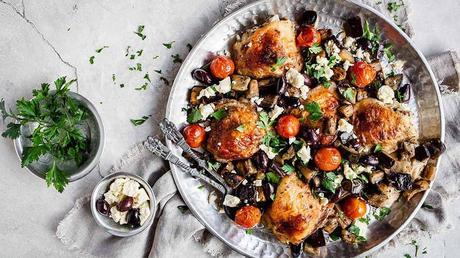
A low carb or keto diet is an effective way to remove the most addictive foods from your life while still ensuring that you are nourished and satisfied by healthy food. Studies of individuals with food addiction who adopt the ketogenic diet report a significant reduction in food addiction symptoms, including cravings and lack of control.
Diet Doctor has many resources to support you in eating a low carb or ketogenic diet, but in short, you will cut out sugar from your diet, and carbohydrates that rapidly digest to sugar, such as refined flours, starches, pasta, potatoes, crackers, cakes, and cookies.
Note, while Diet Doctor provides keto desserts using non-caloric sweeteners, my advice to any food addict is to avoid these sweet-tasting goodies. This is because, for most people with food addiction, even though the keto treats are not "sugar," the sweet taste can still light up the reward pathways. In my experience, this is often the reason for relapse from a keto plan that was otherwise doing well for you.
On a low carb or keto diet you will fill up on nutritious proteins, a wide range of vegetables, nuts, seeds, and low-sugar fruit such as raspberries, blueberries, and strawberries.
Again, in my experience, once you have moved past the withdrawal phase of cravings, these non-addictive foods become satisfying and delicious. There is NO feeling of deprivation. You will feel nourished, calm, and happy around food, not driven by compulsions and urges you cannot control. There is serenity around food, as long as you do not eat your trigger foods or indulge in your food addictive behaviors, such as volume eating.
Many people with food addiction also find it helps to join a support group or talk with others with food addiction, in similar models to Alcoholics Anonymous. There are more than a dozen organizations with support groups that can help the food addict. These include Overeaters Anonymous, Food Addicts Anonymous, Food Addicts in Recovery Anonymous, and Compulsive Eaters Anonymous. Google "food addiction support group" to find other options in your region.
Additional resources and help
For more information and support, check out the following resources, including my recurring online course " Adapt Your Life - Sugar and Food Addiction " with a new intake on September 26, 2022.
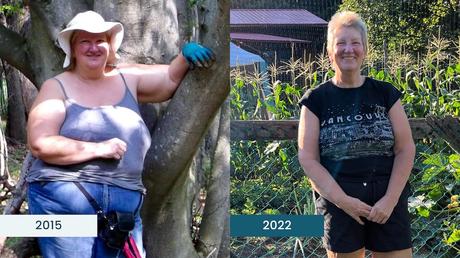
Progress with higher satiety eating
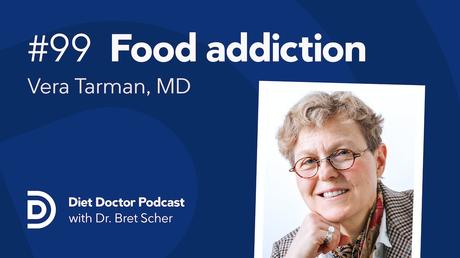
Podcast: Food addiction
